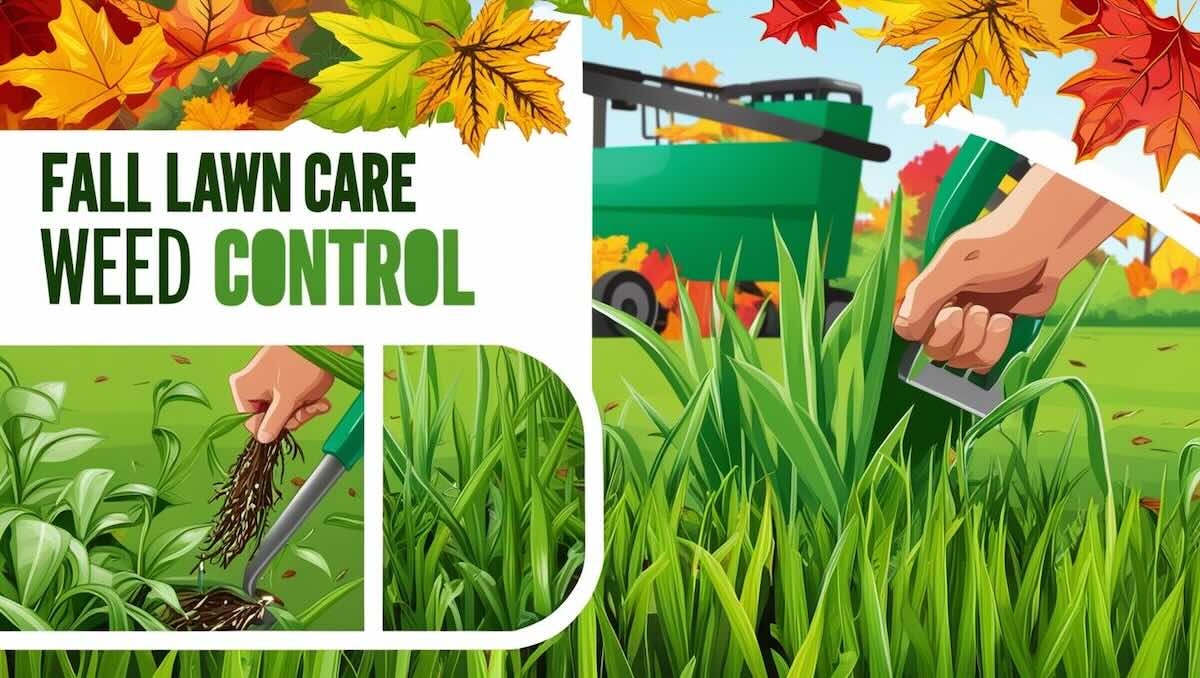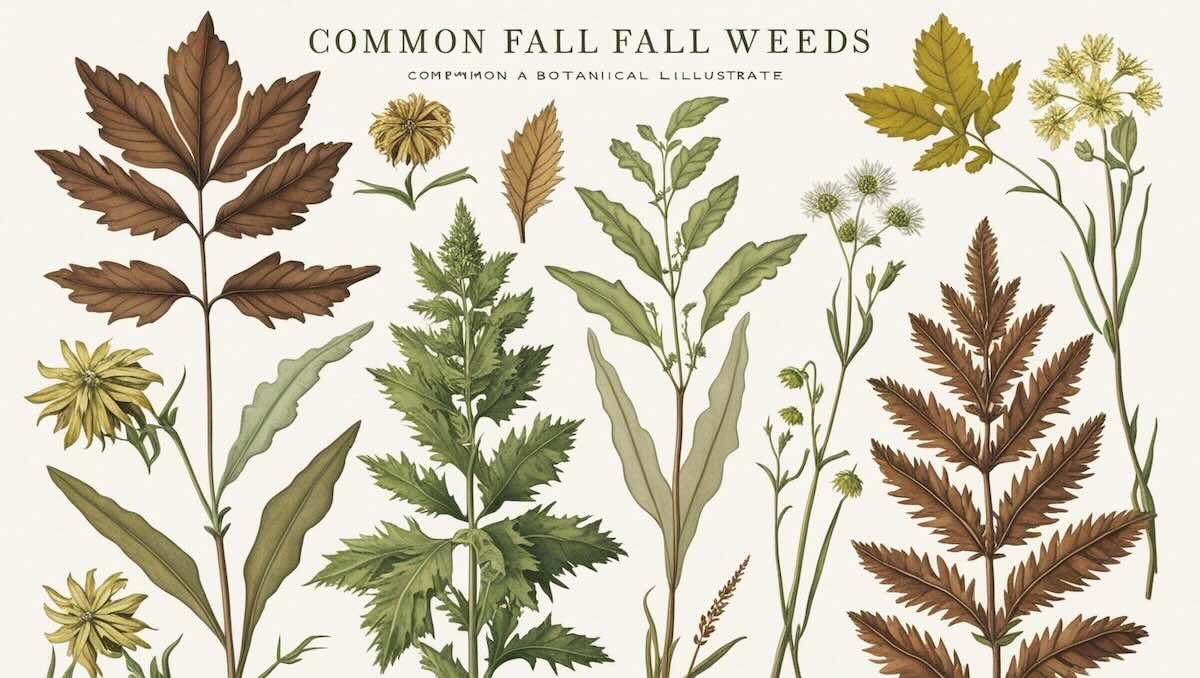Hey there, fellow lawn warriors! As someone who’s spent countless hours battling weeds in my own yard, I know the struggle is real. But here’s the thing – fall is actually your secret weapon for winning the war against weeds. Let’s break down everything you need to know about fall lawn care weed control, minus all the complicated jargon.

Why Fall Weed Control Matters (And Why You Shouldn’t Skip It)
You might be thinking, “Really? Weed control in fall?” Trust me, I had the same reaction when I first started taking care of my lawn. But here’s why it’s super important:
- Weeds are actually at their weakest in fall
- They’re actively storing nutrients for winter
- Your grass will thank you come spring
- It’s easier than fighting weeds during peak growing season
The Big Players: Types of Weeds You’re Up Against

Let me tell you about the troublemakers you’re dealing with:
Broadleaf Weeds:
- Dandelions (yeah, those yellow party crashers)
- Clover
- Chickweed
Grassy Weeds:
- Crabgrass
- Foxtail
- Annual bluegrass
Your Fall Weed Control Game Plan
Step 1: Timing Is Everything
The best time for fall weed control is when daytime temperatures are consistently between 60-80°F. This usually means early to mid-fall, but don’t worry – I’ve got your back even if you’re starting a bit late.
Step 2: Choose Your Weapons
Here’s what works best:
For Broadleaf Weeds:
- Post-emergent herbicides (fancy talk for “weed killer that works on existing weeds”)
- Look for products containing 2,4-D or dicamba
For Grassy Weeds:
- Pre-emergent herbicides (stops new weeds before they pop up)
- Perfect for preventing winter annual weeds
Pro Tip: I always check the weather forecast before applying any weed control products. You want at least 24 hours without rain for best results.
The Perfect Timing Two-Step
First up, tackle those annual weeds when temperatures hit 60-75°F. That’s when your grass roots are beefing up for winter, making it the sweet spot for both post emergent herbicides and lawn fertilizer. I learned the hard way that timing is everything – especially if you want to prevent those pesky spring weeds.
Your Weekend Warrior Checklist:
- Morning Attack (10 AM)
- Quick mow to prep lawn areas
- Clear fallen leaves (they love hiding weeds)
- Pro tip: Perfect time for that morning coffee!
- Afternoon Action (Noon-2 PM)
- Apply pre emergent herbicide for future control
- Follow with broadleaf herbicides for existing weeds
- Pro tip: Use a spreader – your back will thank you!
The Lazy Person’s Arsenal:
Must-Haves:
- All-in-one fertilizer (saves multiple trips)
- Post emergent herbicide (for stubborn spots)
- Basic spreader (borrow one if needed)
Secret Sauce Tips:
- Skip spot treatments – blanket coverage is easier
- Address soil compaction first – aerate your lawn if needed
- Focus on lawn health to prevent pest control issues
- Boost grass growth with proper timing
Common Questions I Get Asked All the Time
Q: Can I still mow after applying weed control? A: Hold your horses! Wait at least 24-48 hours after application. Trust me, I learned this one the hard way.
Q: What about my pets? A: Keep them off the treated areas until everything’s completely dry. I usually wait a full day to be extra safe.
Q: Should I fertilize at the same time? A: Yes! Fall is perfect for a one-two punch of weed control and fertilizer. Just space them about a week apart.
My Secret Tips for Success
- Water your lawn before treatment (but not right before) – healthy grass fights weeds better
- Don’t skip the corners – weeds love hiding along fences and borders
- Mark your calendar – consistency is key for long-term weed control
The Don’ts of Fall Weed Control
Let’s avoid these common mistakes (I’ve made them all so you don’t have to):
- Don’t apply when frost is expected
- Don’t treat wet lawns
- Don’t forget to read product labels (boring but important)
- Don’t overlap treatments too much
The “Oops, I Messed Up” Quick Fixes
Because we all make mistakes, here’s how to fix common ones:
- Applied too much? Water it in lightly
- Missed a spot? Wait 24 hours, then touch up
- Rain showed up uninvited? Reapply after 48 hours, but only on dry grass
Remember, the goal here isn’t perfection – it’s getting maximum results with minimum effort. And guess what? This lazy approach often works better than the complicated stuff because you’ll actually do it.
Pro Tip: Set a reminder on your phone for next fall’s weed control. Future you will be amazed at how much easier it is to maintain a weed-free lawn when you stick to this schedule.
Safety Stuff (Because I Have to Mention It)
- Keep pets off the lawn for 24 hours
- Wear shoes you don’t care about
- Skip the shorts (trust me on this one)
- Store products where kids can’t reach them
Wrapping It Up
Fall weed control isn’t just about killing weeds – it’s about setting your lawn up for success next spring. Start with these steps, and you’ll be well on your way to a weed-free yard that’ll make your neighbors green with envy.
Need more lawn care tips? Check out my guides on [fall lawn care tips] and [lawn fertilization] to keep your yard looking its best all year round.
What’s your biggest weed control challenge? Drop a comment below – I’d love to help you tackle it!
